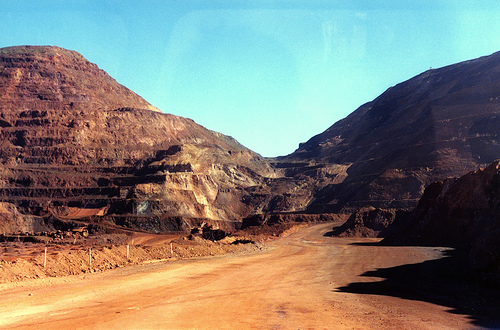Last month, Australia’s peak national commodity markets adviser, the Australian Bureau of Resource and Agricultural Economics (ABARE), predicted that iron ore exports would rise almost 40 per cent in 2010/11, to A$47.7 billion, but worried about whether a ‘significant slowdown in economic growth in China would have important implications for world commodity demand and therefore Australia’s commodity exports’, observing that ‘considerable uncertainty remains in the outlook for China’s export performance, especially if Europe’s import demand is adversely affected by the debt crisis and a sharp depreciation of the euro’. (See the June 2010 ABARE report in pdf).
Two months earlier, Ken Henry, Secretary of the Australian Treasury, underlined how critical assessments of the growth of steel demand in China (and India) were to the long term outlook for the commodity terms of trade and hence to the management of Australian fiscal policy. What’s going on in China and India, he argued, provides ‘at least reasonable grounds for believing that strong world demand for Australian commodities and high terms of trade will be sustained for some time, accepting that the duration of the period of elevated terms of trade is subject to a high degree of uncertainty’ (see the Post-Budget Address). And he outlined in some detail what, then, might be the implications for Australian fiscal policy. The Reserve Bank of Australia has also noted the effect of Chinese resource demand on the medium term Australian economic outlook.
This week’s lead essay by Huw McKay, Yu Sheng and Ligang Song distils some careful analysis that helps us get a handle on what the outlook for the growth of Chinese steel demand might be, one to two decades out. This is the essential first step in making judgments about how steel demand in China might flow back into the Australian resource sector, Australia’s terms of trade, the Australian economy more broadly and how it needs to be managed. This work represents the most thorough analysis of this question published to date. The conclusion is that peak demand for steel will be reached when China’s GDP per capita level is US$15,449, and that on a trajectory of 7 per cent compound growth, China would reach this point during 2024. It will reach it 3 or 4 years earlier if growth is 7.8 per cent a year on average over this period. China’s impact on the global resources demand and supply balance will be profound. The world should plan for a time when upwards of 700kgs of steel are produced for every Chinese citizen. So, while a number of commentators, and some business leaders are rightly nervous about iron ore and other resource prices falling from their giddy heights in the near term, the prospect over the next decade and a half is for strong growth in Chinese steel demand and trend terms of trade.
Australia’s election
Last weekend Australia’s election produced the closest result in the history of the federation. There is likely to be a hung parliament in which the Labor Party (led by Julia Gillard) or the Opposition Liberal-National Coalition (led by Tony Abbott) will have to forge government through an arrangement with 4 or 5 independents and minor party representatives. The closeness of the vote and Australia’s electoral system mean that the final result of the election is unlikely to be known for another week or more. We shall review the implications of this extraordinary electoral outcome for Australia’s partners in Asia over the coming weeks.


Glancing at these articles this morning has been a cheerful relief. Not the least because they re-assert in various ways the ongoing importance of mainstream applied economics to Australia. Analysing commodity markets and links between the international economy and Australian business cycles was once the bread and butter of the economics profession. It is good to know some people still think it important. Instead of useful scholarship, we know have an open season for spivs and charlatans. Journalists once knew their place and the more able politicians turned to academic advice and a well-trained public service. The person I am looking for is the one who allowed ‘media studies’ into the schools and universities.